Service Desk Automation: 7 Benefits and 6 Processes To Start Automating Today
Get to know how to automate your service desk to reduce IT support costs, increase operational efficiency and deliver better CX to your end-users.

Do you know how much your end-user support costs?
If we take Desktop IT support alone, Level 1 support costs businesses on average $22 and Level 2 costs rise to $84 as more people are becoming involved in the resolution process. But in the omnichannel landscape, IT support teams are now responsible for thousands of remote devices (desktop, mobile, IoT, etc.) and a multitude of support channels:
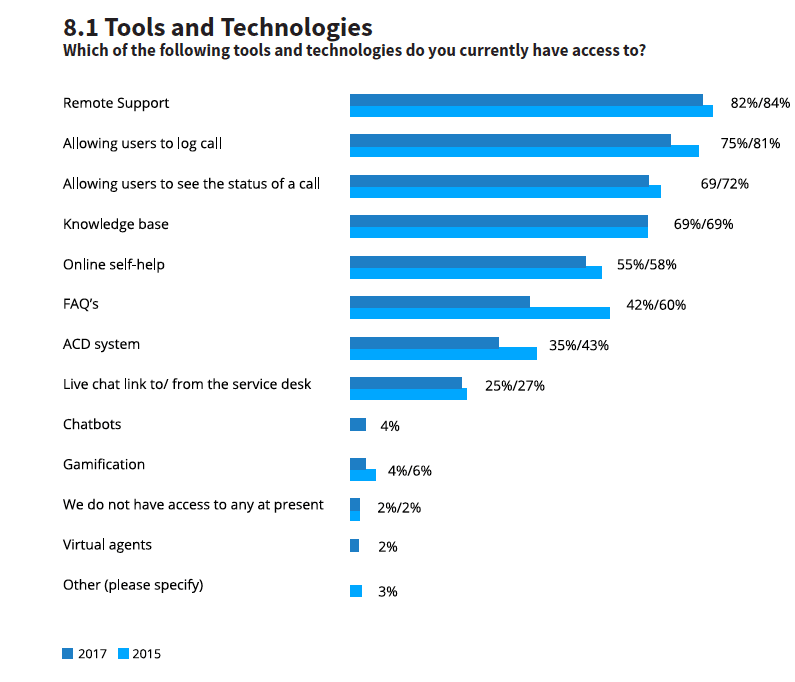
Source: Service Desk Benchmarking Report 2017 by Service Desk Institute
Additionally, dozens of updates are rolled out each month. Not all of them may go as smoothly as planned. Some end-users may experience downtime. Others may be confused by product changes. With the growing volume and complexity of support queries, relying on manual work alone is no longer viable.
Outsourcing tech support is just one piece of that puzzle. To become truly effective and maximize the value of the services you deliver, it’s time to consider how to automate service desk management.
The Business Case for Automating Your Service Desk
On average, internal support teams receive 492 tickets per month, per Zendesk. Clearly, the number fluctuates for different industries and correlates with your SLA levels. Whenever your business experiences downtime or worse a half-day outrage – those support tickets’ numbers go through the roof. No wonder that it takes 24.2 hours on average for businesses to provide first response to an internal support ticket.
But customers are reaching out to you not only when things go awry. They also need help with upgrades, send requests for additional services and interact with your brand in other ways.
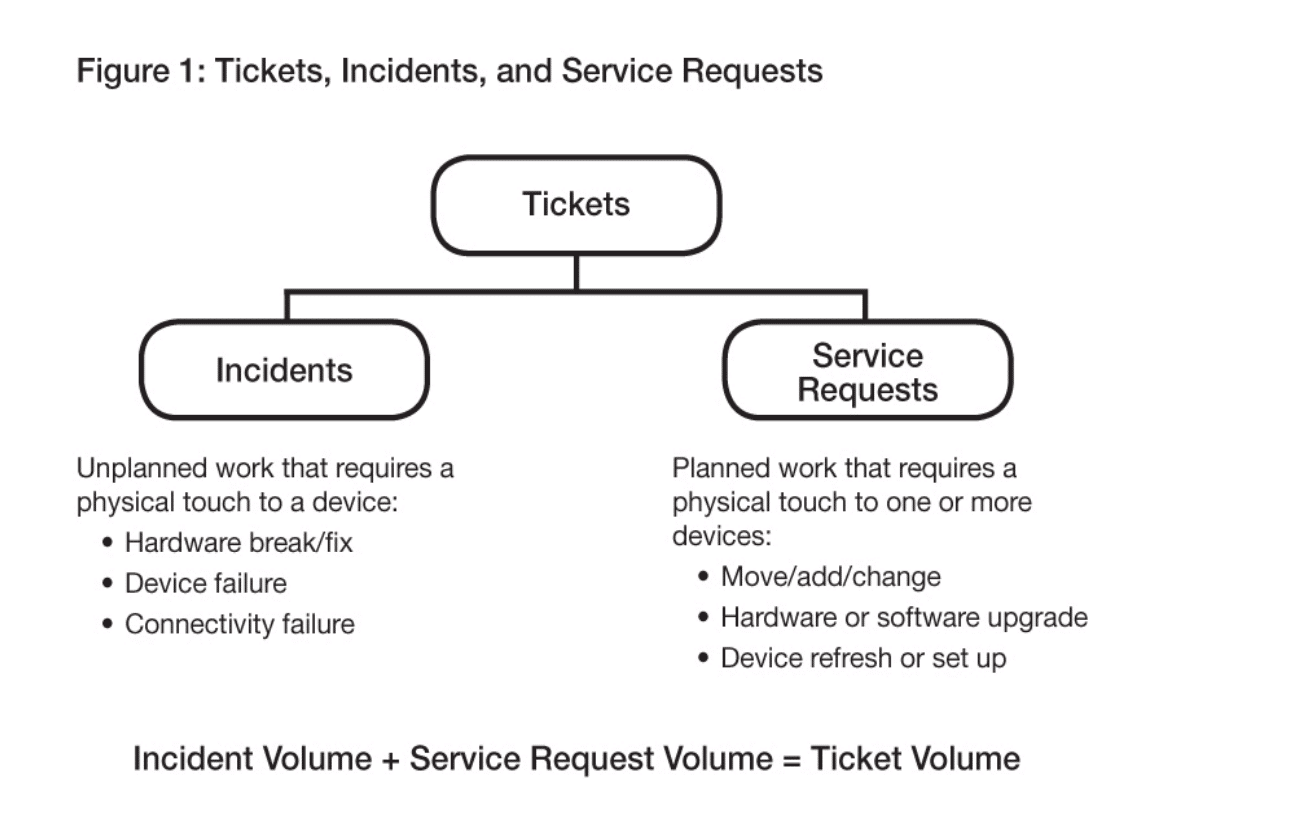
According to HDI data, an average user in the high tech industry reports 0.61 incidents per month and files 0.77 service requests.
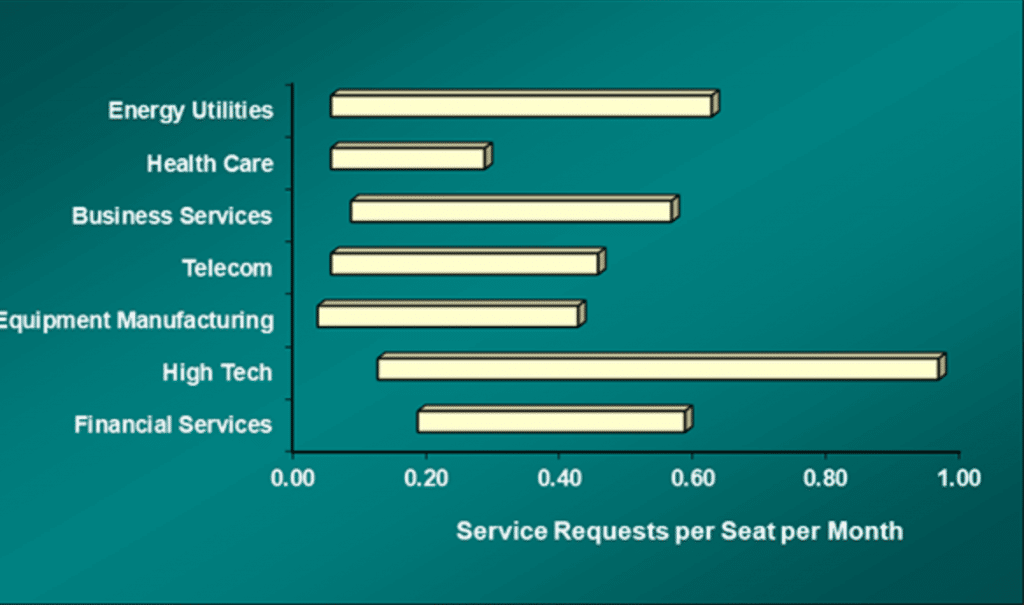
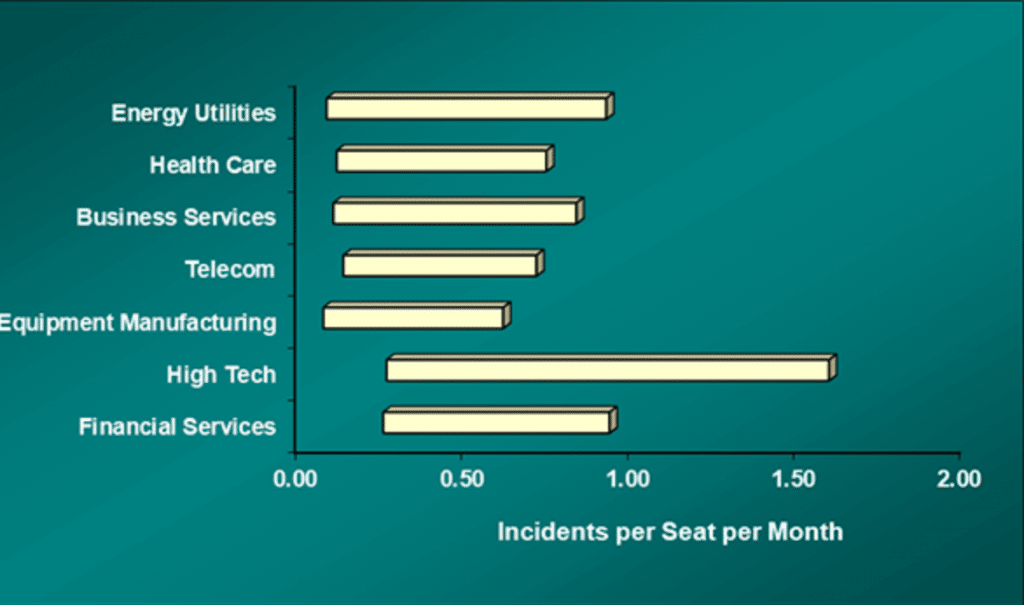
So how many people do you need on your IT support team to effectively handle the volume of incoming tickets?
The “golden” end-user to IT service desk worker ratio is 70:1 according to Gartner. However, if you browse industry data and feedback shared by IT teams worldwide, you will notice that few businesses manage to adhere to this standard. In fact, some service desk managers report having an 800:1 ratio. Smaller companies manage to achieve a 30:1 ratio – setting a benchmark within their industry. However, the median IT service desk to user ratio is 200:1.
Why? Hiring and retaining qualified IT teams for support remains a challenge for business. So instead of growing your team and growing the overhead costs, consider increasing your staff efficiency with the help of technology. And that’s where service desk automation comes to the fore.
The Benefits of Service Desk and Support Automation
Eliminate low-value processes and slash support costs. Support automation software can streamline the incoming communication, and help your team avoid dealing with redundant tasks that eat up productive time. Intelligent systems can handle mundane tasks, while your engineers focus on dealing with more serious issues.
End-to-end visibility. Gain detailed insights into your service level performance and understand when and why the bottlenecks occur. The newly obtained data can be then used to improve your team’s performance. Businesses that rely on analytics to track their support team performance slash their resolution time by 16% on average.
Increased productivity. Switching to automated solutions leads to a 50% or greater increase in productivity. Error-prone manual processes become faultless, and your team can get their core work done faster, instead of trying to catch costly mistakes.
Superior customer experience. Great support leads to more sales. 62% of B2B and 42% of B2C customers reported purchasing more after a positive support experience. 66% and 52% respectively stopped buying from a company after a negative customer service interaction, per Zendesk.
By adding more tools to your help desk, you can take the support experience once a step further and issue proactive updates to customers, whenever you are trying to recover from a disaster. Take a look at Slack’s uptime calendar, showing the current service levels and providing detailed breakdowns and updates about reported incidents:
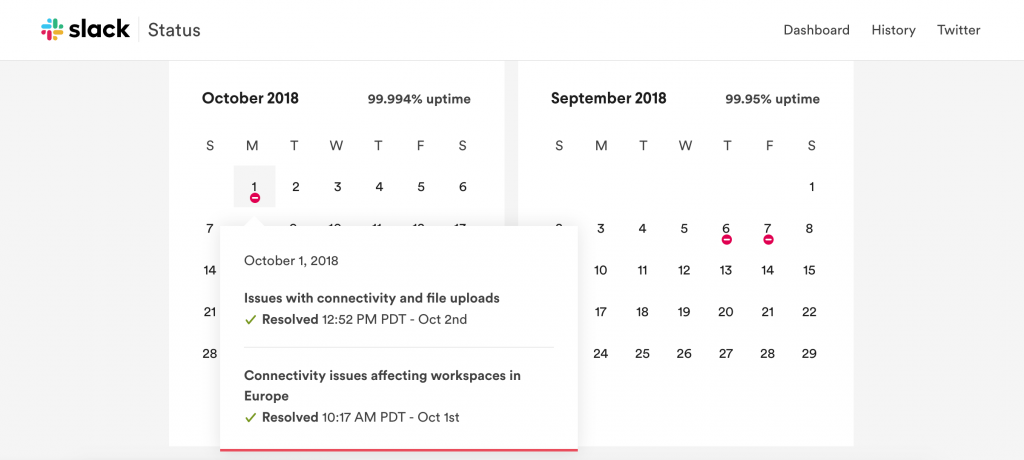
Additional benefits of automating IT service desks include:
- Increased speed of execution. By creating an omnichannel support experience consisting of software, human teams, and self-service portals, you can offer true 24/7 support without draining your budgets.
- Gain more flexibility. Creating and implementing new automation-based practices is easier and more cost-efficient than training your staff to do things “the new manual way”.
- Improve your support team’s happiness. Let’s face it – the customer support industry has incredibly high turnover. Finding a dedicated specialist is already challenging. Embracing the “do more with less” approach helps you retain the best talent and keep their morale high.
Service desk automation is the first step towards IT automation on a larger scale, aimed at improving your teams’ performance company-wide. You can further improve customer onboarding processes, by switching to cloud infrastructure, to automate their account setup, instead of having a specialist perform that locally.
Core Tasks Service Desks Should Automate
Incoming ticket processing. Reduce the need for human intervention at the early stage of support. The software can handle ticket categorization and re-routing to appropriate departments with higher accuracy and efficiency than your average tech support worker.
Using JIRA – one of our favorite IT tools – you can also automatically triage email requests and classify all the incoming messages based on their content. For example, when a customer messages about “password change”, the tool will automatically classify the request as “security” and route the email to the correct person.
Customer updates management. You can program specific rules for sending timely updates to your customers about the status of their ticket or request. For example, as a Fintech company, you can keep track of the new credit cards being issued and notify customers how long they will have to wait till their card arrives e.g. “Your card will arrive within 5 business days.” By keeping your users informed about the internal processes, you reduce the number of questions forwarded to your team about trivial things.
SLA compliance. Setup special alerts for issues that conflict with your SLA, so that your team can take immediate action. Such tickets should be automatically escalated to the highest priority status and forwarded to a relevant specialist and senior management. Don’t let the most important queries fall through the cracks and hamper your business reputation.
Productivity measurement. Instead of manually gathering individual metrics, receive a 360-view of your team’s performance through one dashboard. You can (and should) collect the following data:
- Average speed to answer
- Meantime to resolution (for different ticket types)
- Cost per email
- First contact resolution rate
- Number of incidents logged on a monthly/weekly basis
- Number of service requests logged on a monthly/weekly basis
- Percentage of escalated to problem status
- SLA compliance rate
- Lost business hours
You can set up customized dashboards for different members of your time. Service desk support managers can receive a more granular view of the individuals’ performance, while executives can get a quick snapshot of the core data.
Common, repetitive tasks. IT departments spend 30% of their time on low-value basic tasks, and 13% of IT specialists find these tasks to be a complete waste of time. By using automation (robotic or no) for such processes you tackle issues at once: speed up resolution time for simple incidents and reduce your IT team’s frustration. As we all know, happy employees are productive employees.
One of the new ideas for IT service desk automation is RPA – robotic process automation. RPA bots, powered by machine learning, can mimic human interactions and deal with those mundane queries within a few seconds, round the clock.
RPA can be used to automate tasks such as:
- multi-factor authentication setup
- password resets
- security verification for unlocking accounts
- virtual server and resources provisioning for new users
- cybersecurity configurations for different user groups
Your agents can use software to fully automate all these requests and auto-approve tickets for such requests.
Stale-ticket closure. Some service requests may take a while to perform. But don’t let them just sit there and mess up your metrics. Using service desk software you can auto-close tickets that have not been updated by the customer within a certain timeframe. And if that person decides to keep the conversation going, your software can automatically re-open the ticket, assign a new support agent and set an appropriate priority level. Your workflow is set on cruise control.
There are even more ways to automate your service desk, using new-gen technologies like chatbots, biometrics authentication and organization-wide IT process automation. Romexsoft team would be delighted to further walk you through the process of automating your service help desk and can take over your remote DevOps support if needed. Let’s talk.





